Apioperdon pyriforme – Pear-shaped Puffball

The Pear-shaped puffball (Apioperdon pyriforme) is an edible mushroom that can be found as a decomposer of both coniferous and deciduous trees. It often fruits in large, dense clusters. The pear-shaped puffball can be either pear shaped or spherical. The color ranges from cream to yellowish-brown. This inside is white and marshmallow-like at first, becoming […]
Rubus spp. – Dewberries
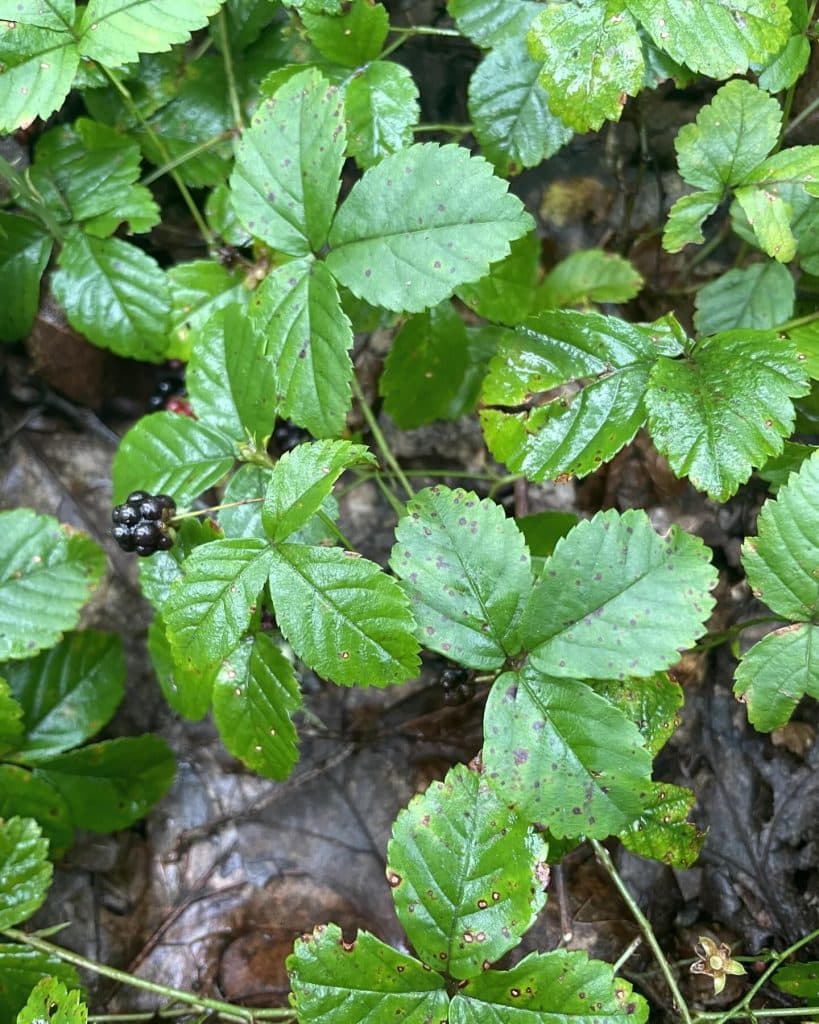
Dewberries (Rubus spp.) are a native relative of blackberries. They can be found along the side of trails in central and eastern North America. Dewberries stay low to the ground, whereas blackberries have upright canes. Leaves are alternate and compound, usually in groups of three or five. The fruits form a compact aggregate berry, unlike […]
Pleurotus levis
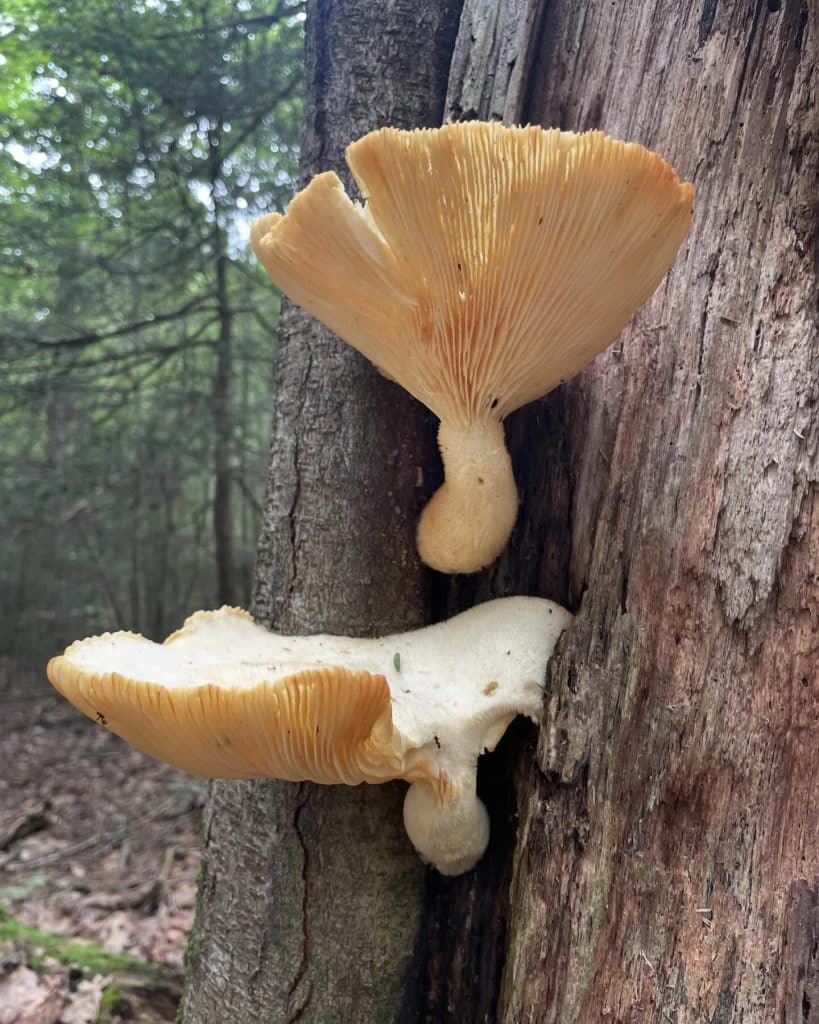
Pleurotus levis is a non-toxic look alike to the choice edible Veiled oyster (Pleurotus dryinus) mushroom. Pleurotus levis can grow on wounds of living trees as a parasite or it can grow on dead wood as a saprobe. The cap is white to cream when young, yellowing with age. Gills are decurrent. The stem can […]
Xanthoconium affine

Xanthoconium affine is an edible mushroom that can be found July-October. It is mycorrhizal with hardwood trees, especially beech and oak. The cap is dark brown or reddish-brown, turning yellowish-brown. Pores are white, becoming pale yellow. The mushroom does not stain blue. The stem is streaked with a color that is paler than the cap. […]
Strobilomyces sp. – Old Man of the Woods
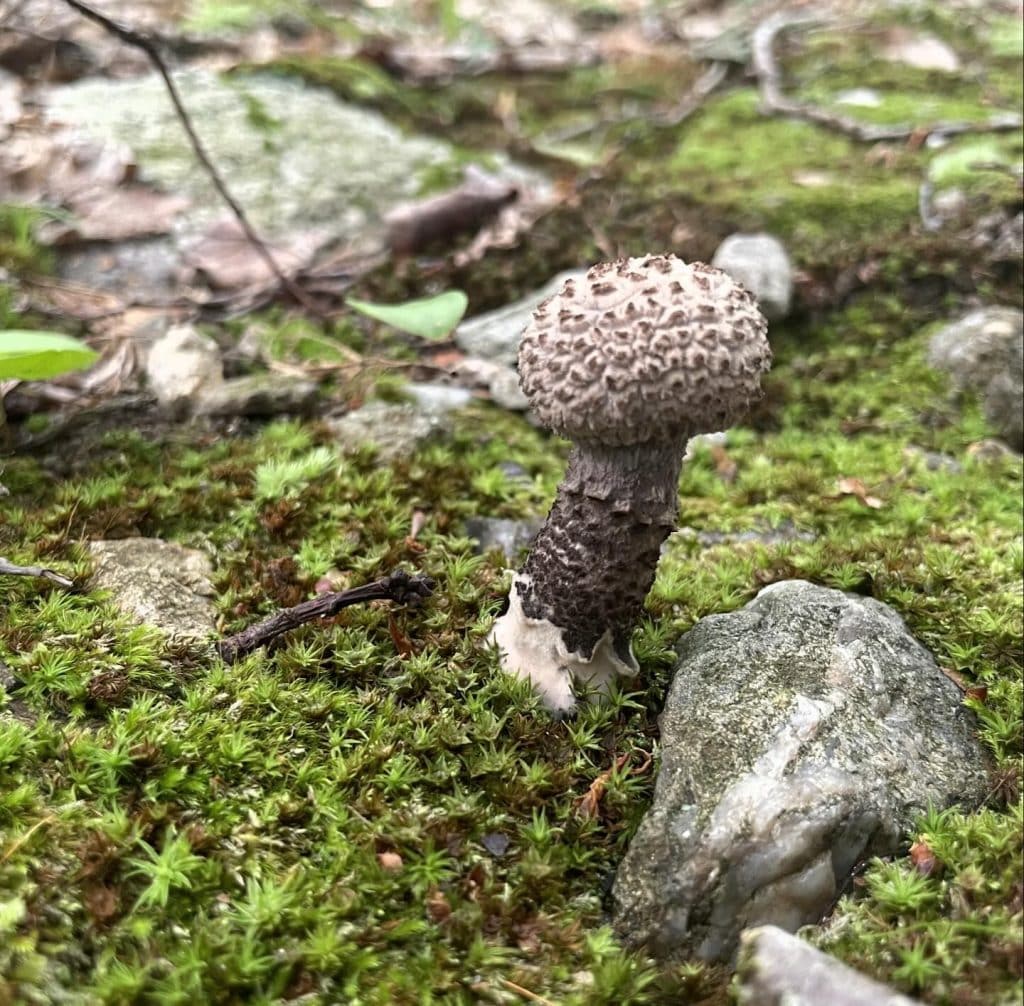
The Old Man of the Woods (Strobilomyces sp.) is an edible mushroom that fruits June-October. It can be found growing singularly or clustered in mixed hardwood or conifer forests. The cap and stem are gray to black and shaggy. Pores start off white, then turn gray and eventually black with age. Flesh turns reddish when […]
Suillus spraguei – Painted Suillus
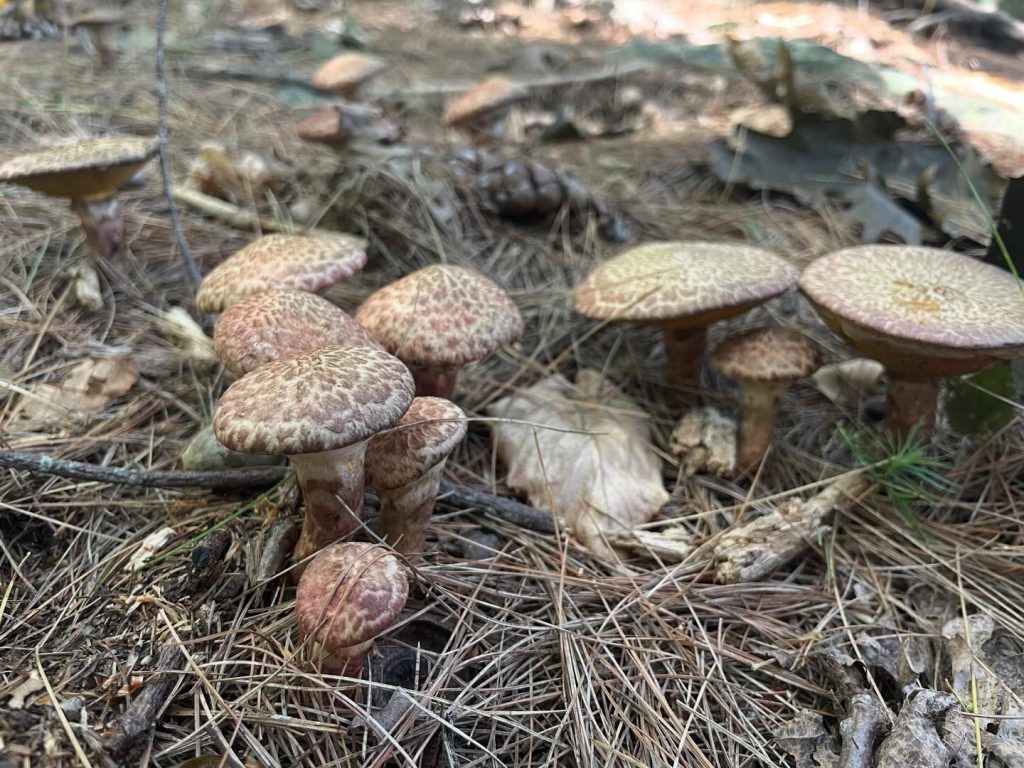
The Painted Suillus (Suillus spraguei) is an edible mushroom that can be found in conifer forests from June-October. The mushroom grows scattered or clustered in the ground. It is a mycorrhizal mushroom that often associates with pine. The Painted Suillus has a unique scaly red cap and stem. The yellow pores are covered by a […]
Tylopilus ferrugineus
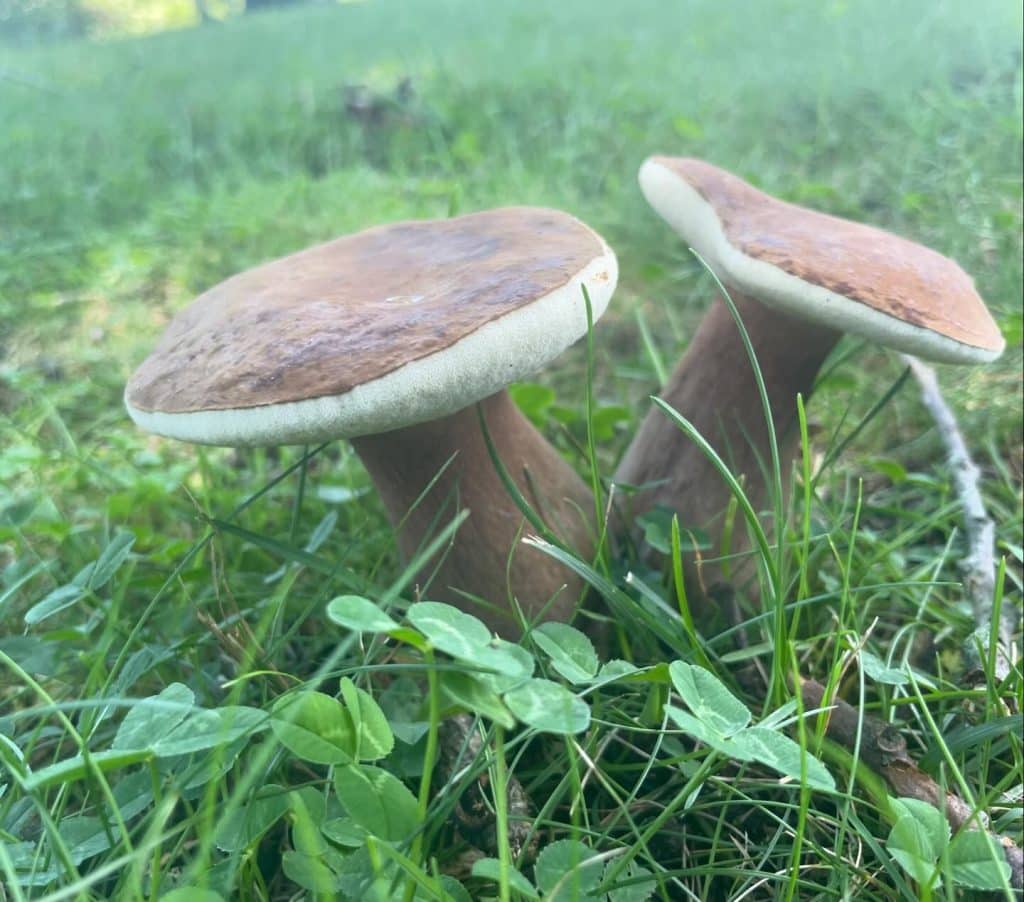
Tylopilus ferrugineus is an edible mushroom that is native to eastern North America. It fruits July-September. The mushroom is often found in grassy areas in association with oak or beech. The cap and stem are brown. The pores are white and stain brown. Young mushrooms have club-shaped stems and very firm flesh. Spore print is […]
Prunus maritima – Beach Plum
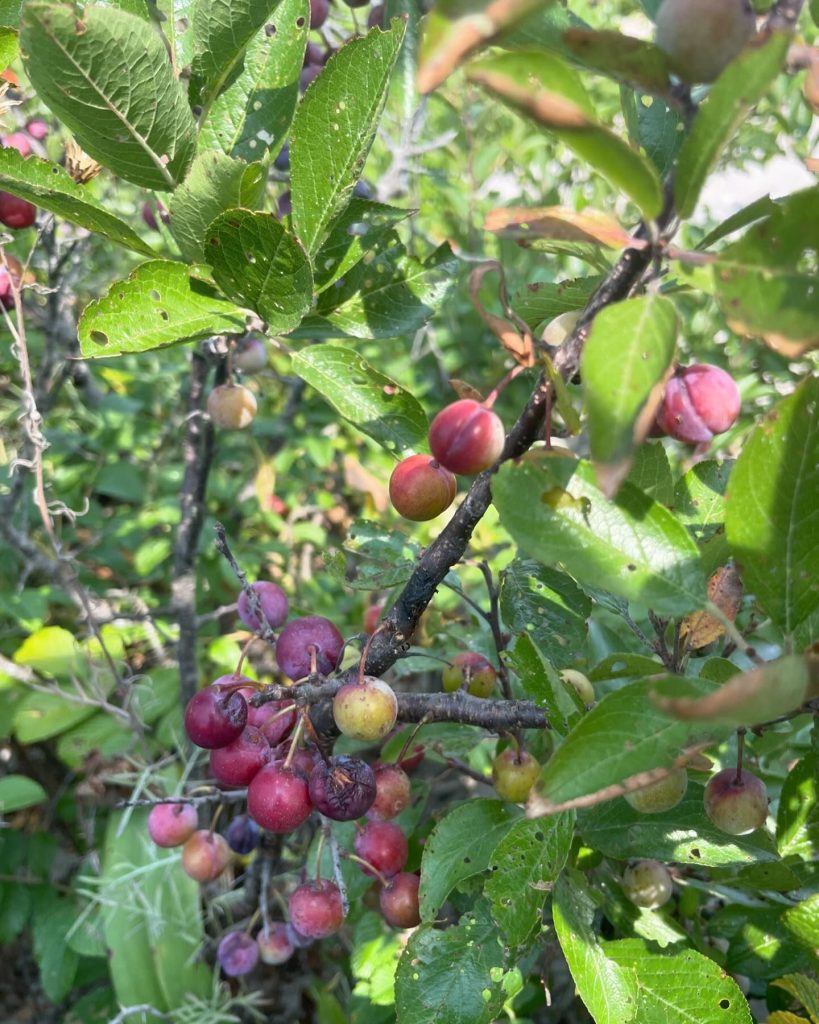
Beach plum (Prunus maritima) is a native plant with edible fruit. It is often found in dunes. It prefers full sun and has a high salt tolerance. Beach plums are shrubs that typically grow 4-8 feet tall. They produce five-petaled white flowers in spring. The leaves are alternate and finely toothed. The fruits are much […]
Xerocomus illudens

Xerocomus illudens is an edible bolete that fruits July-October. It forms mycorrhizal relationships with oaks and possibly other hardwoods. The cap is cinnamon-brown or pinkish-cinnamon colored. The pores are lemon yellow and angular. The flesh is pale yellow and does not stain blue. The stem is mustard-yellow and has a course net. Spore print is […]
Rosa rugosa – Beach Rose
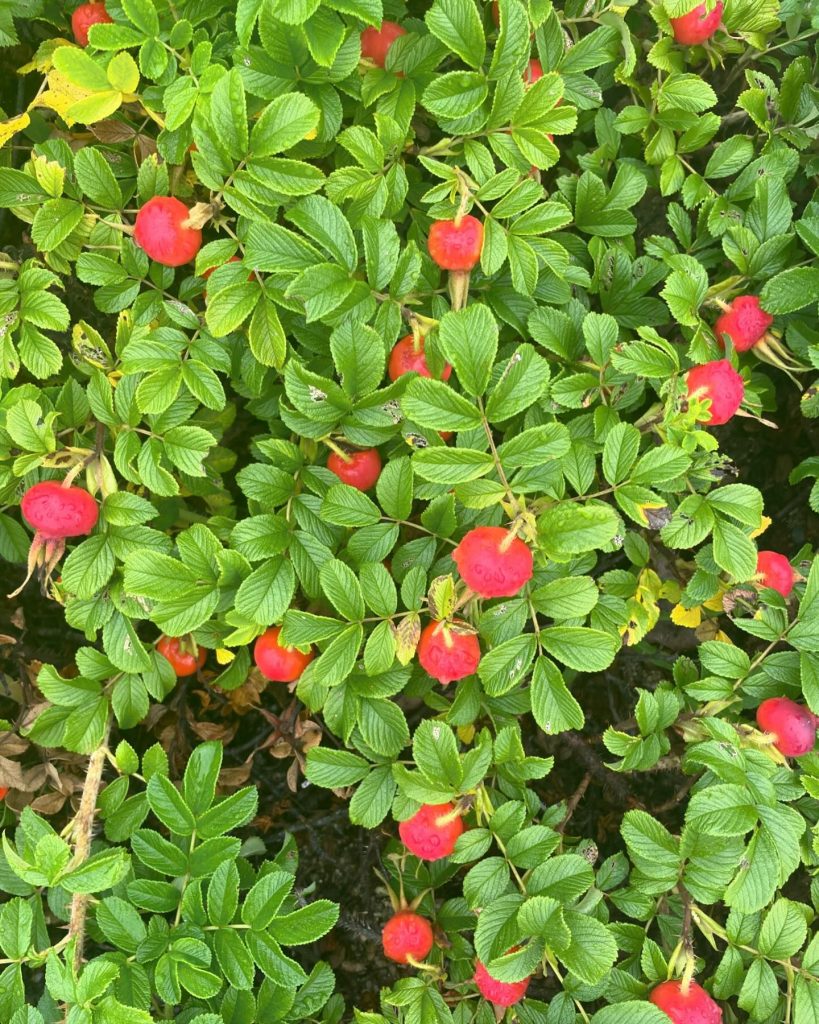
Beach rose (Rosa rugosa) is an invasive plant from Asia that was brought to the U.S. as an ornamental. It is salt tolerant so is often found near beaches. Beach roses have wrinkled, compound leaves with 5-9 leaflets. The canes have short, straight prickles. In late summer, flowers turn into rose hips that resemble tomatoes. […]
Commelina communis – Asiatic Dayflower
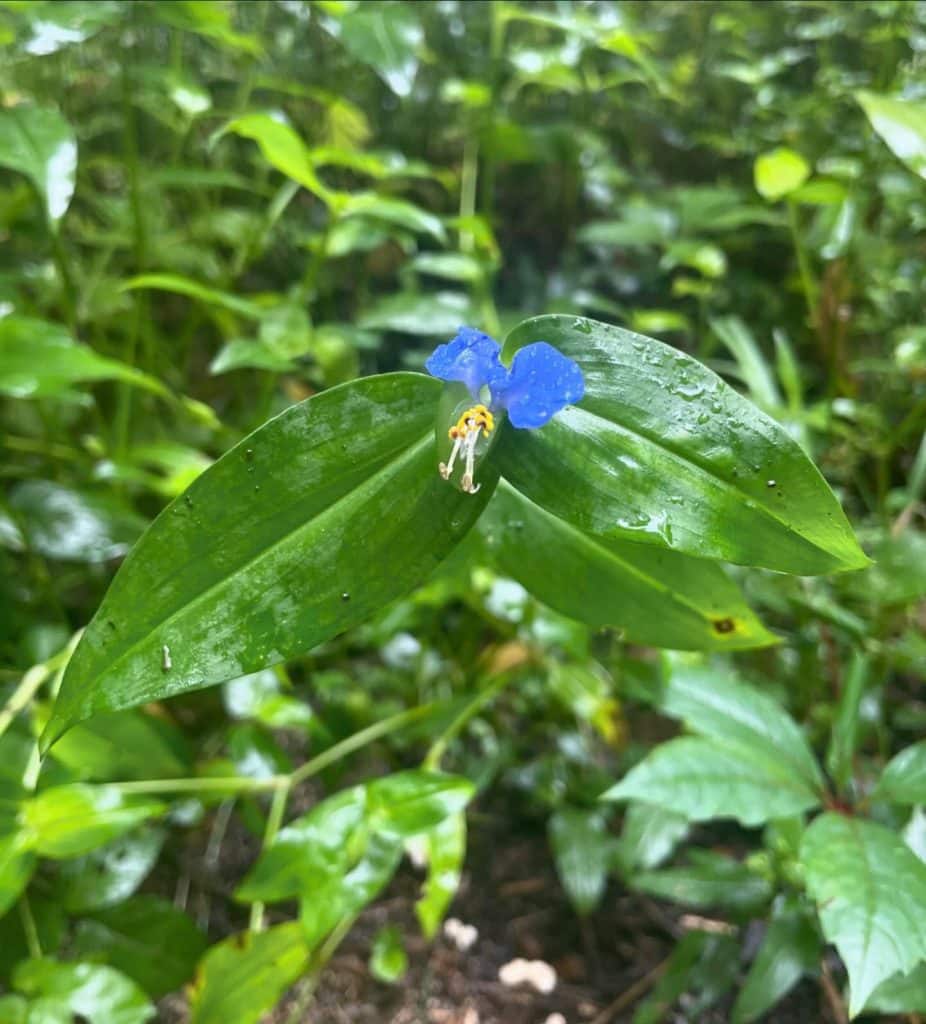
Asiatic Dayflower (Commelina communis) is a non-native annual that can be found in disturbed areas in partial shade. It has the ability to spread quickly, forming dense clusters. The plant can be identified by its unique flower. The flower consists of two larger blue petals on top and a smaller white petal underneath. Flowers last […]
Sarcodon imbricatus – Scaly Hedgehog

The Scaly Hedgehog (Sarcodon imbricatus) is an edible, but often bitter mushroom that can be found July-November. It grows in the ground near water or in hilly areas. The mushroom is often found growing near conifers, especially spruce. The scaly hedgehog, also known as “Hawk’s wing”, has raised brownish scales on its cap. Under the […]
Rubus allegheniensis – Common Blackberry
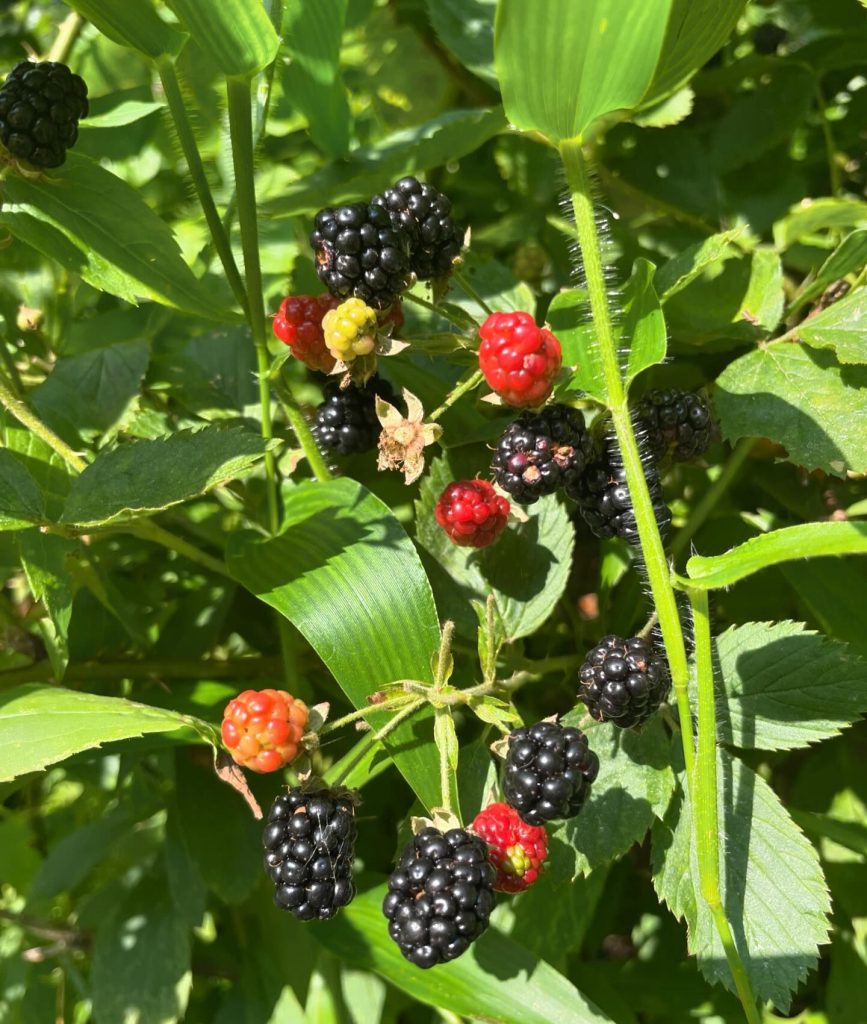
Common Blackberry (Rubus allegheniensis) is a native perennial with edible berries and leaves. It can be found along forest edges and fields in sun or partial shade. Blackberry canes can be identified by their ridged stems and wide, curved prickles. Leaves are compound with 3 to 7 leaflets. Flowers with five white petals appear in […]
Baorangia bicolor – Bicolor Bolete
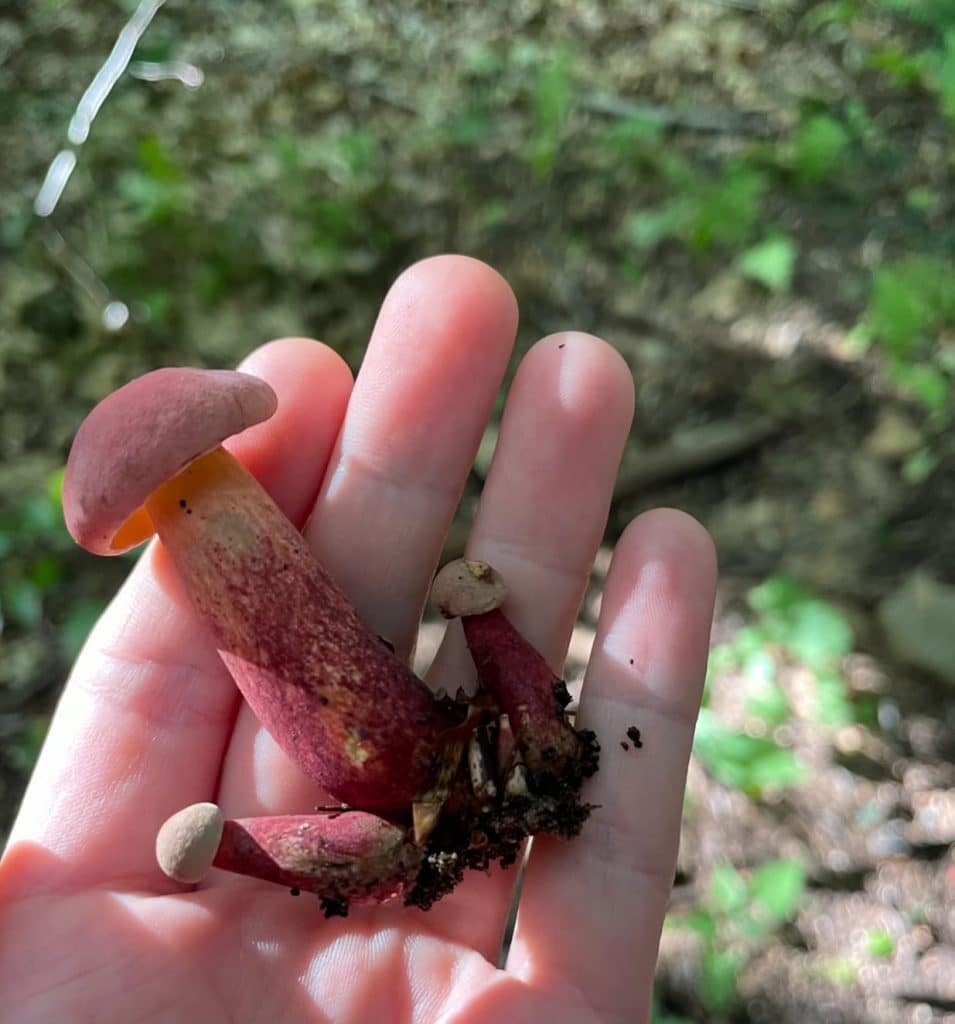
Bicolor Bolete (Baorangia bicolor) is an edible mushroom that can be found from June-October. It has a mycorrhizal relationship with oak and other hardwood trees. Bicolor boletes grow in the ground scattered or in small clusters. The cap is pinkish to dark red. Occasionally young mushrooms will have a yellow cap. The pore surface is […]
Rubus strigosus – Wild Red Raspberry

Wild red raspberry (Rubus strigosus) is a native plant that is closely related to cultivated raspberries (Rubus idaeus). Red raspberries can be found at the edges of woods, fields, and roadsides. The leaves are divided into 3-7 leaflets which have a green upper surface and silvery-white undersurface. Berries ripen mid-to-late summer. Red raspberries are delicious […]
Lactifluus hygrophoroides – Hygrophorus Milk Cap
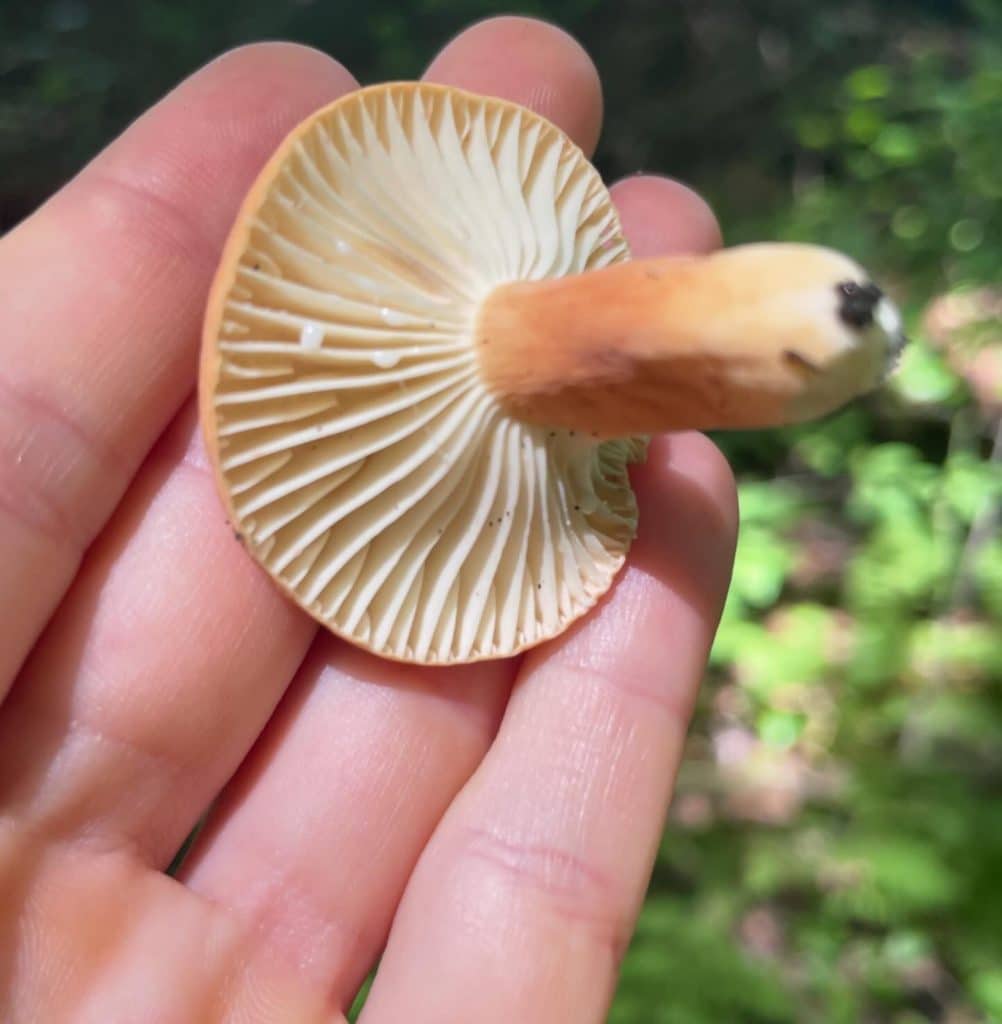
Hygrophorus milk cap (Lactifluus hygrophoroides) is an edible mushroom that can be found in the eastern United States. It fruits late summer to early fall. The Hygrophorus milk cap forms mycorrhizal relationships with oaks and potentially other hardwoods. It grows singularly on the ground near its host tree. The cap is pale orange to reddish-brown […]
Craterellus ignicolor – Flame Chanterelle
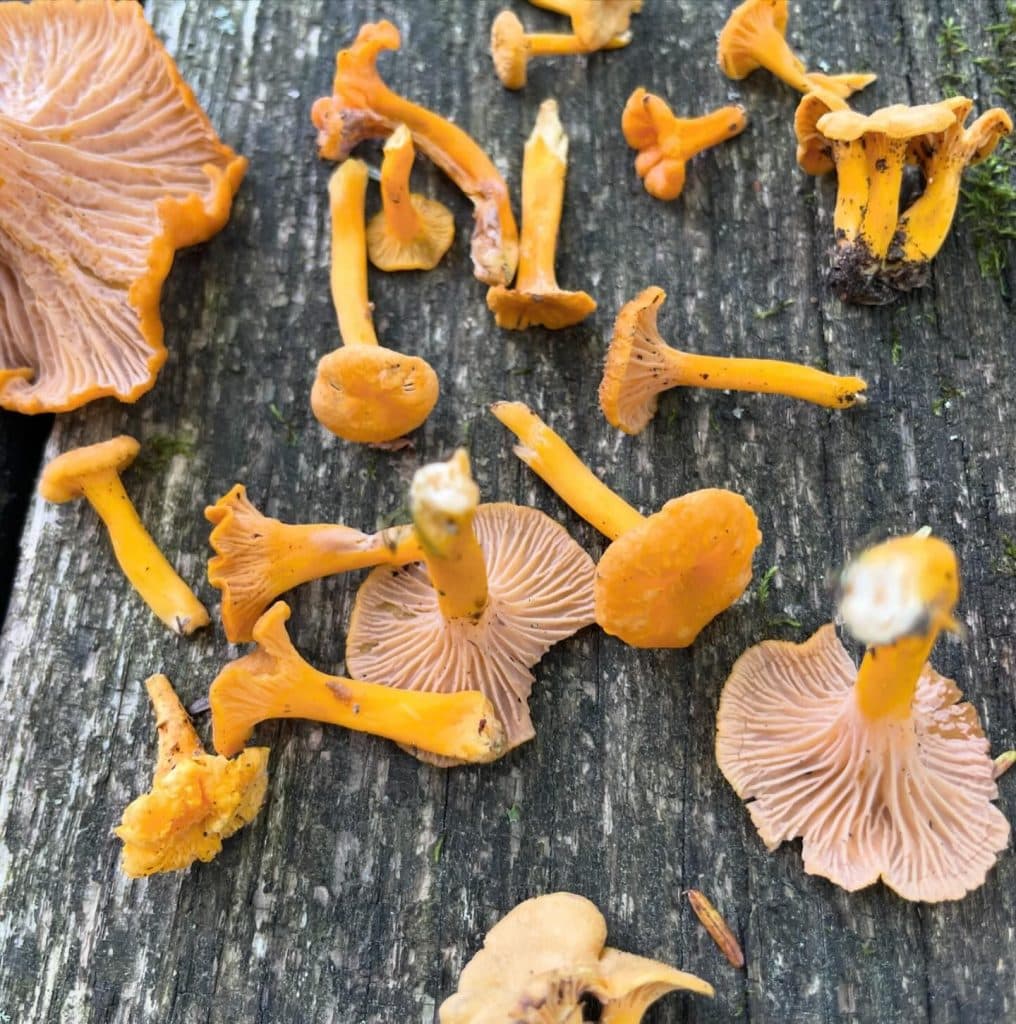
Flame Chanterelle (Craterellus ignicolor) is a choice edible mushroom that is native to eastern North America. It can be found July-November in swampy forests. The flame chanterelle, also known as “yellowfoot chanterelle” can tolerate very wet environments. It is often found growing in clusters in moss of hardwood forests. It is mycorrhizal with oaks, beech, […]
Craterellus fallax – Black Trumpet
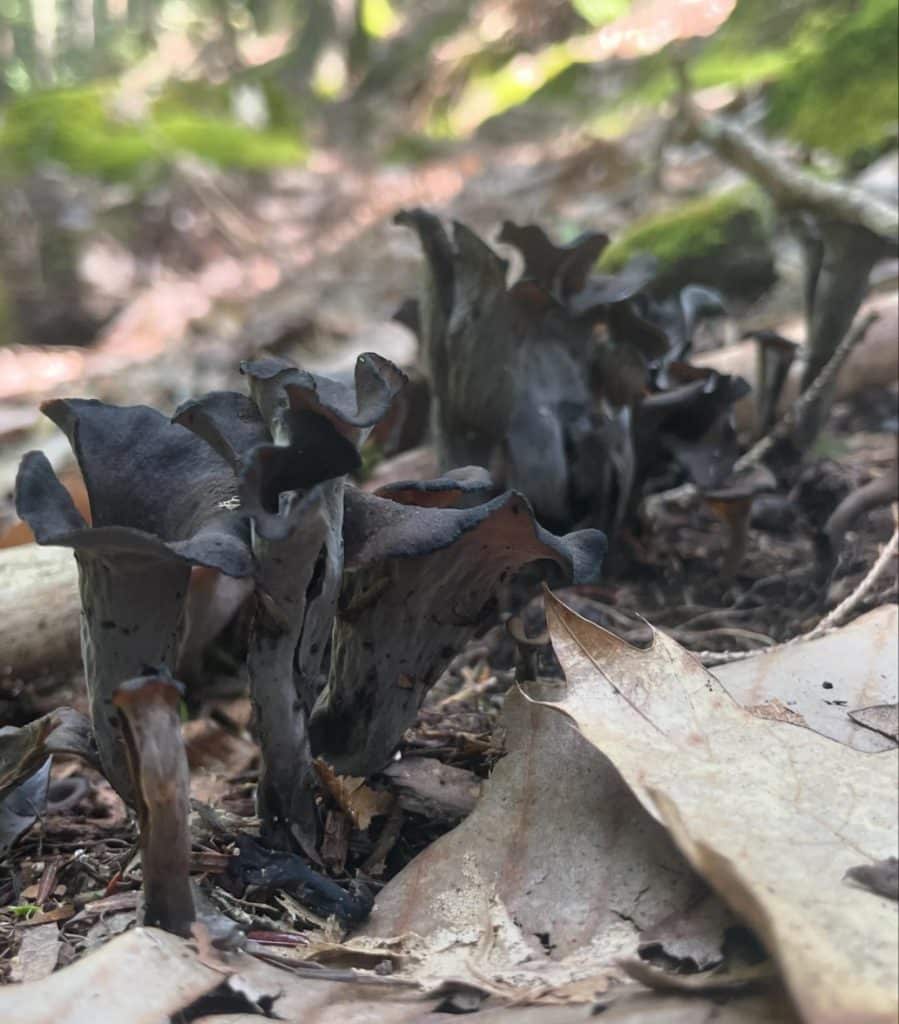
Black trumpets (Craterellus fallax) are a delicious wild mushroom whose flavor is compared to truffles. Black trumpets can be found summer to fall. They often fruit in moss, near oak and beech trees. Black trumpets can be either mycorrhizal or saprobic. They are in the same family as chanterelles and are often found growing in […]
Rosa virginiana – Wild Rose

Wild Rose (Rosa virginiana) is a native plant with edible and medicinal uses. We have six native species of wild rose in New England and two introduced species. Wild rose can be found in sandy and saline soil. It requires at least 6 hours of sun per day. Leaves are alternate and composed of […]
Coprinopsis variegata – Scaly Ink Cap
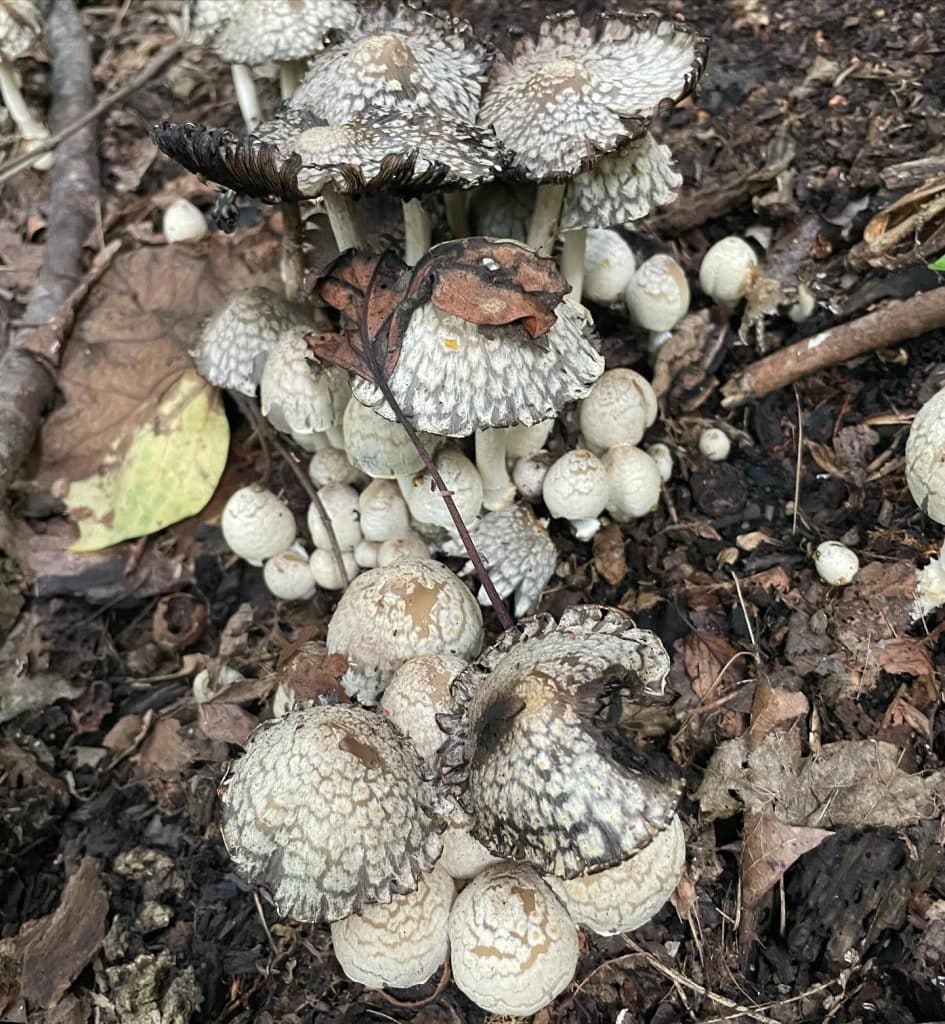
The Scaly Ink cap (Coprinopsis variegata) is a decomposer with questionable edibility. The scaly ink cap can be found growing on decaying hardwoods in eastern North America. It fruits summer-fall. The cap is covered by a felty, whitish veil when young. The veil soon breaks into large, felty patches revealing a brownish yellow surface underneath. […]
